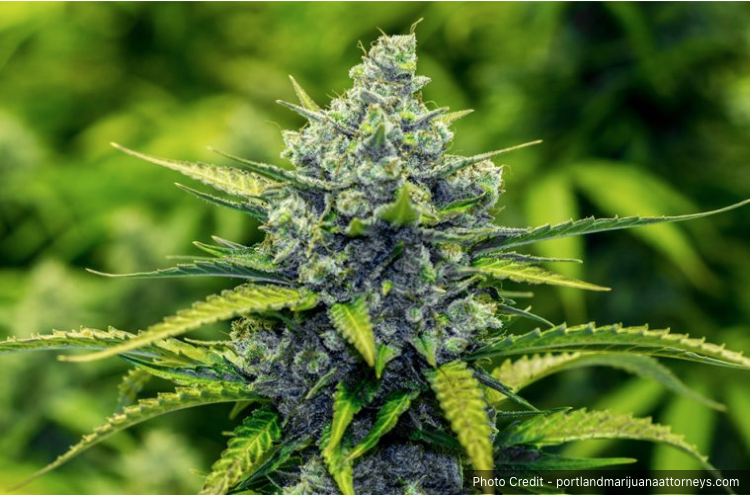You’ve probably been hearing a lot more about cannabis and marijuana products as they become legal across Canada. Two of the main natural compounds in the cannabis plant are getting most of the attention: THC (tetrahydrocannabinol) and CBD (cannabidiol). Consumers are getting curious about their options, so here are some facts about THC and CBD to help you make more informed choices about your next cannabis purchase.

Photo Credit – portlandmarijuanaattorneys.com
Fun fact! Did you know that marijuana is actually a street term that was used initially back in 1910 by the Mexican peasants migrating across the US border carrying this intoxicating product? This term was looked at as a target for placing social control on immigrants populating the US after the Great Depression. Cannabis is the scientific term used for both Hemp and “Marijuana”, the stuff that gets you “high”. Hemp is the male plant, meaning it doesn’t have any fertile ability and no trichomes or hairs and cannot produce high content of THC. Whereas “ Marijuana”, the psychoactive and intoxicating cannabis plant is female and only females produce trichomes containing THC and other cannabinoids. She’s a bad mama jamma!
Male Vs Female Plants
Now we all know cannabis gets you high but a lot of us are not aware that cannabis has more to offer than just that. Male plants tend to get tossed in the compost due to the fact that male plants don’t blossom, flower, or create high THC. Don’t ‘can’ your male plants so fast because they can be very useful and hold many natural benefits. Male cannabis plants, like female cannabis plants, produce terpenes that give cannabis their ability to give different strains their unique aromas and flavor profiles.
Both male and female cannabis plants contain THC and CBD. Male plants or hemp plants usually contain larger amounts of CBD than THC. Cannabis plants that are female usually have more THC than CBD. You can get the popular cannabinoids from either plant, it will just depend on what you are looking to use it for.
Photo Credit – thewallpaper.co
THC
THC is known for its psychoactive, intoxicating properties and is also known to help with pain, anxiety, muscle spasticity, insomnia, low appetite, nausea and more. THC has attributes that when in contact with the receptors in our body, their interactions affect the release of neurotransmitters in the brain by mimicking the effects of anandamide and 2-AG, the natural cannabinoids that our bodies produce. These neurotransmitters are a natural chemical response process for relaying messages between cells and have roles in managing sleep, eating habits, the feeling of pain, and many other bodily functions.
THC may cause temporary side effects in some, like elevated heart rate, coordination problems, dry mouth, red eyes, slower reaction times and memory loss. So as mentioned before “Start Low and Go Slow”. THC can be consumed by smoking, vaping or ingesting. It’s also available in oils, tinctures, and capsules.
CBD
CBD is known for its non-intoxicating traits and in helping with various conditions like seizures, inflammation, pain, psychosis, nausea, migraines, depression and anxiety. When taking CBD you are more likely to experience relief of your unwanted discomfort, with little or no noticeable effect on your cognitive abilities. CBD is also well known for its aid in helping manage pain and inflammation. Alongside its non-intoxicating effects, it also counteracts the effects of THC. So if you get too high, smoke too much or eat too much THC you can take some CBD to bring down your high or lessen the effects of intoxication. If you take too much CBD the most that will happen is you might feel a bit sleepy. And in this busy age of adulting who’s not sleepy on a regular. Heellllooo!
CBD is well-tolerated, even in large doses because of its non-intoxicating traits. It’s actually safe for children, pets and the elderly. Studies suggest any side effects that occur with CBD use are likely the result of drug interactions between CBD and other medications you may be taking, or “snake oil” a term used for fake or non-natural ingredients. Don’t do the snake oil, and always check the label or get advice from a medical professional. CBD can be found in the form of flower, tinctures, edibles, oils, supplements, and extracts.
Photo Credit – soundcloud.com
THC and CBD Together
THC and CBD work very well together, some might say they give something called the entourage effect. Which is still undergoing studies of its full efficacy. It is described as an experience by which over 400 natural compounds of terpenoids/terpenes, which are found in cannabis but also in many plants including spices, herbs, trees and fruits, and what gives cannabis strains their distinctive smells and flavors. Phytocannabinoids, cannabinoids produced in the trichomes (crystals or THC crystals) of a cannabis plant work together to create a particular effect on the body. Studies say the use of THC and CBD and their interactions between there unique cannabinoids and terpenes, work in synergy to treat pain, inflammation, depression, anxiety, addiction, epilepsy, and more. As the study and scientific research grows, a more accurate understanding of the exact synergistic relationship with various cannabinoids and terpenes will lead to advanced control of the entourage effect. This knowledge will push the future of cannabis products, developed for specific patients and adult consumers’ needs and desires. Like everything in nature, there is synergy in an unbalanced balance. We are connected to nature and nature to us.
THC and CBD both have medical benefits. To this day, no one in history has ever overdosed or died from cannabis use or consumption. They are both considered safe but one should acknowledge the likelihood of side effects and interactions with alcohol or other drugs you may be taking. Talk with your doctor if you have any questions or concerns.
As always smoke responsibly and smoke in moderation!


Recent Comments